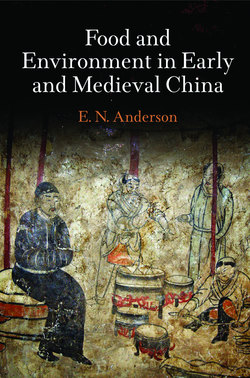Читать книгу Food and Environment in Early and Medieval China - E. N. Anderson - Страница 9
На сайте Литреса книга снята с продажи.
ОглавлениеUSAGE
I use standard transcriptions of the relevant languages.
Herein, for western Asia and northern Africa, “Near East” applies to ancient and medieval times, “Middle East” to the modern zone so called. “West Asia” excludes North Africa but includes some borderlands such as the Caucasus. “West Asia and North Africa” would be far preferable to either of the former terms, for obvious reasons, but this is not the place to make the change.
Finally, one of the most consistent minor annoyances in East Asian studies is the stubborn insistence of historians and art historians on mistranslating Chinese and Japanese words for plants and animals. This is far worse for Japanese (where tanuki, the raccoon dog, becomes “badger,” the uguisu bush-warbler becomes “nightingale,” and so on) but bad enough in the case of Chinese. Especially annoying is the persistent mistranslation of mei as “plum.” The plant is actually a species of apricot that is known in botany and in the nursery trade as the “flowering apricot.” The problem would not be so bad if China did not have plums, but it does, and they are called li. Admittedly, “Oriental flowering apricot” is impossibly long for translations of poetry. Thus, herein, I follow some recent authors (such as James Hargett in Fan 2010) and simply use the Chinese word mei.
Somewhat farther from food, but important enough to be a problem here, are the absurd Victorianisms like “benevolence,” “righteousness,” and “caitiff” that still afflict Chinese translations and make good Chinese writing sound like stuffy Victorian nonsense. Also a problem is the old tendency to see ancient China as “feudal” and accordingly to use words like “marquis” and “earl” to translate Chinese titles that really mean something quite different. I shall try to avoid this, but some translations, such as “duke” for gong, are almost impossible to avoid.
